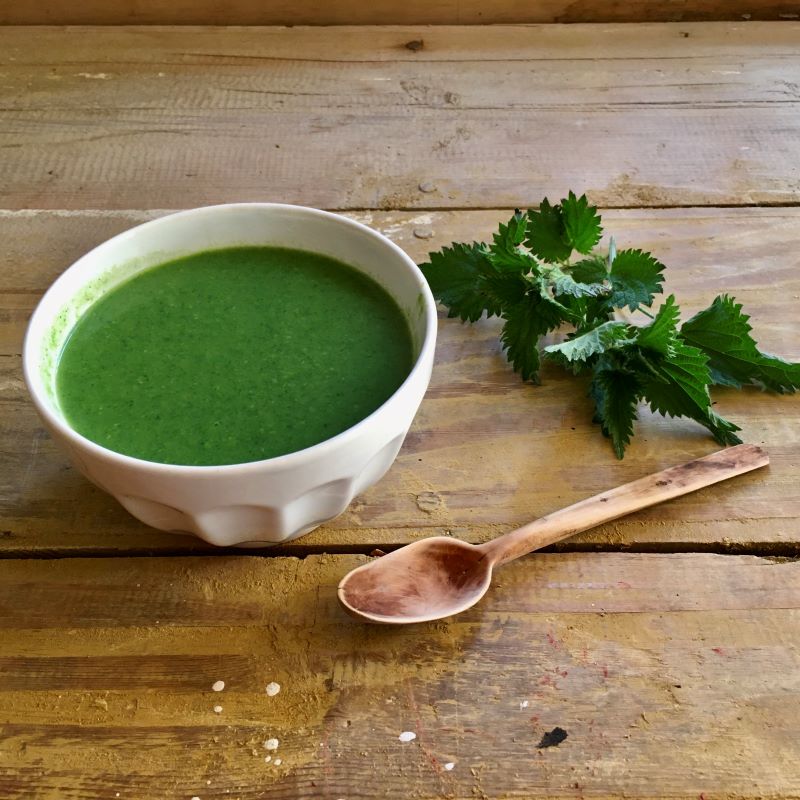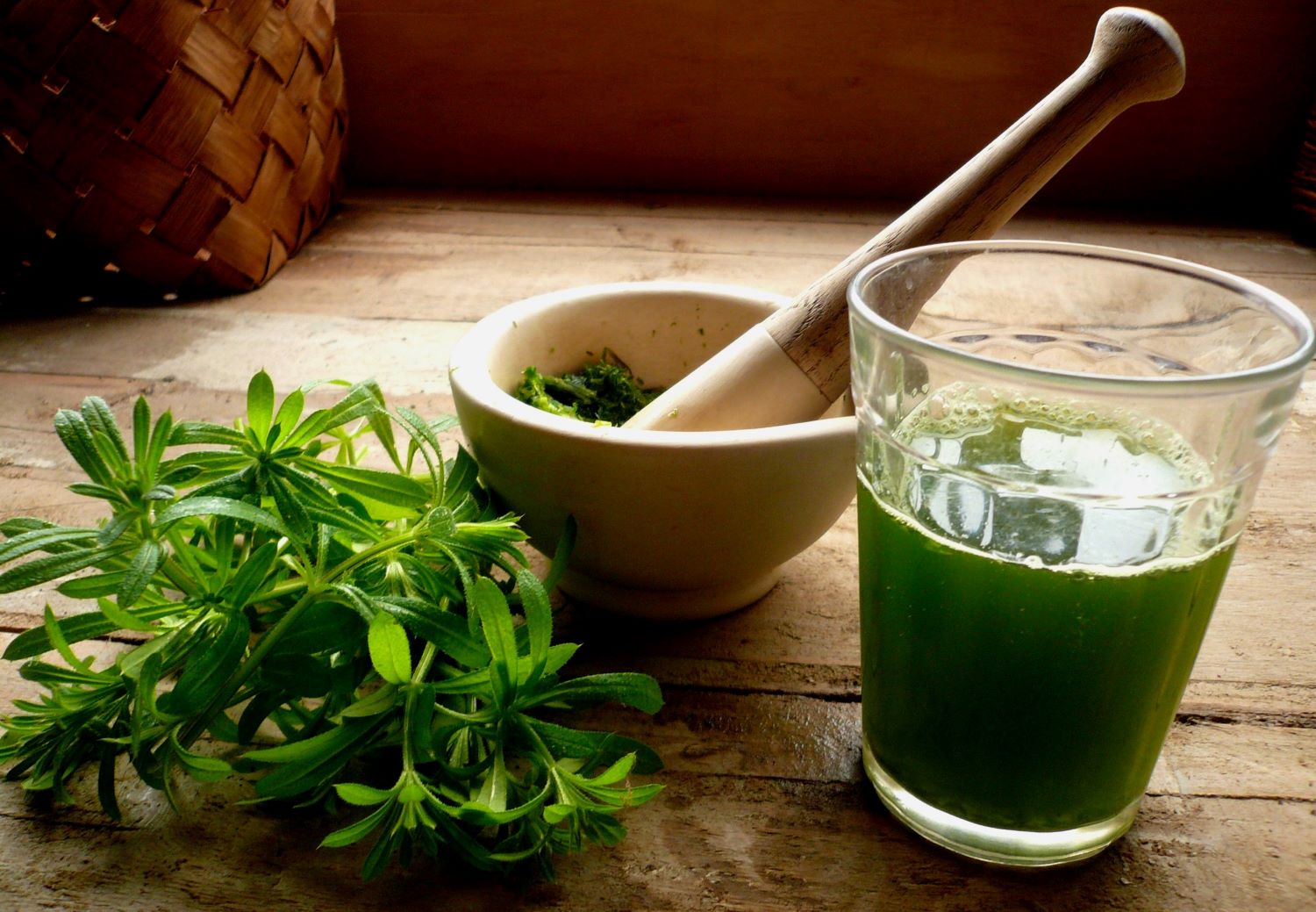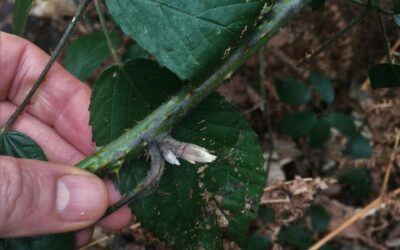Nettle Seeds.

Nettles are a truly amazing plant. They’re a valuable food source to key butterfly species, and also humans, plus their fibres are very strong and good for making cordage and textiles. Over recent years, the big nettle patch at the end of my garden has become a valued and carefully stewarded zone.
Now is the time to harvest seeds, which are full of fantastic nutritional and medicinal properties (once the plants flower you should no longer eat the leaves).
Look for strong plants whose seeds are plentiful, fresh and green (avoid any seeds that have gone brown already). Nettles have male and female plants, but only the female plants produce seeds. The male plants produce small clusters of flowers (which produce pollen to fertilise the female plants).
At first glance they can look quite similar, but once you know what you’re looking for it’s much easier to find what you’re looking for. I recommend using a jeweller’s loop or magnifying glass to get a good close-up view, so that you can start to recognise the male and female plants.
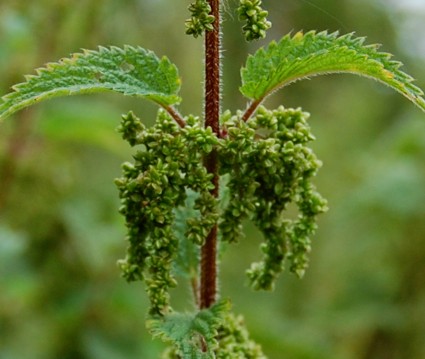
Nettle seeds (female plant)

Male flowers
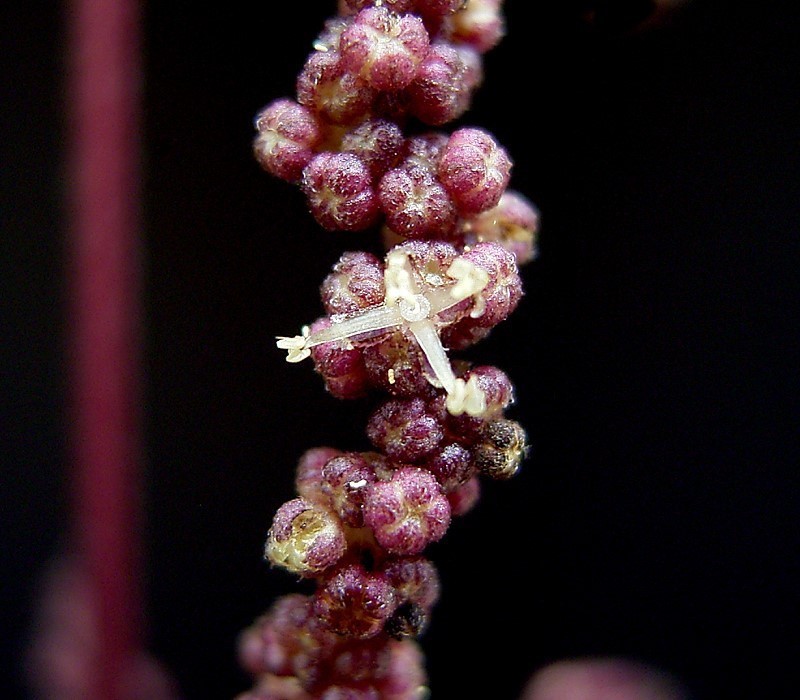
Male flowers can be purple
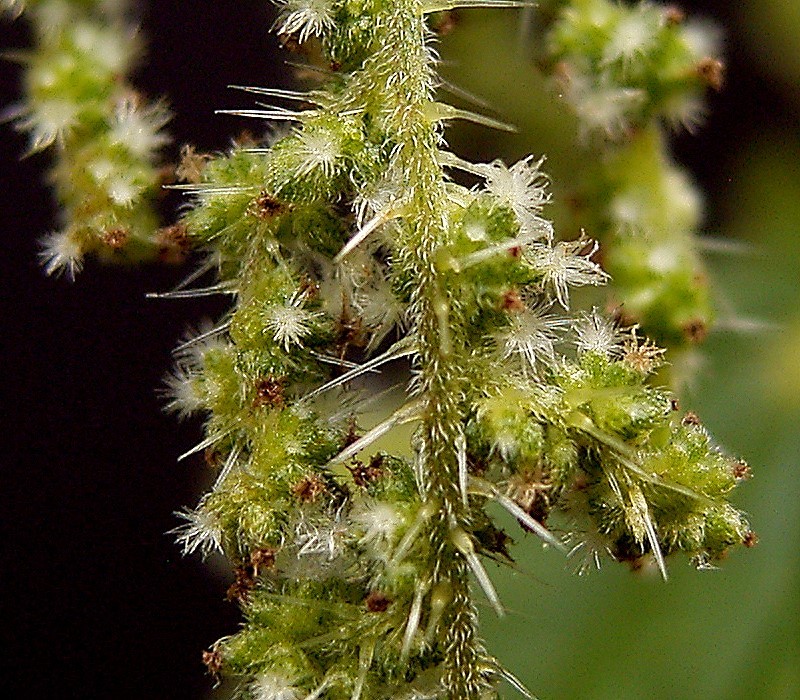
Female flowers
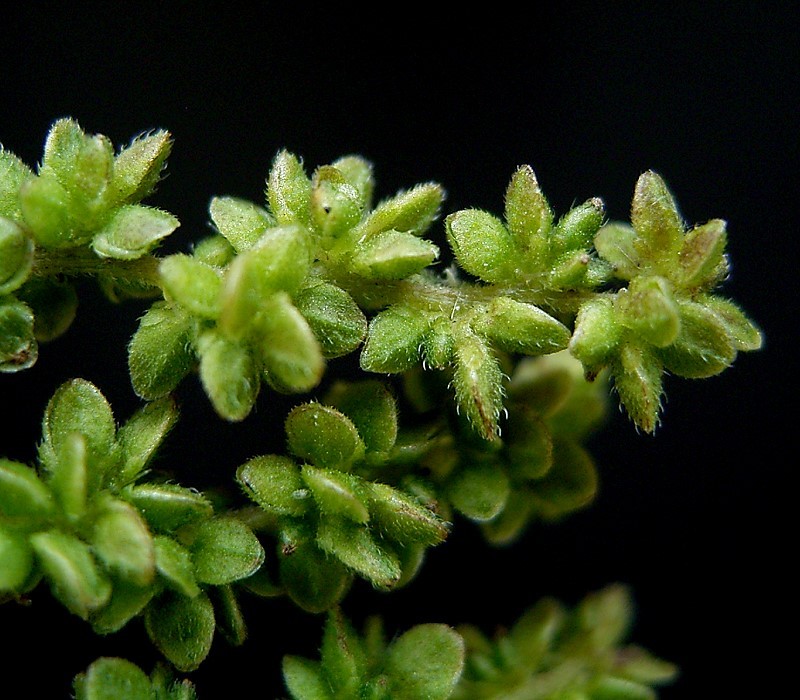
Nettle seeds, female plant
To gather the seeds, cut off the top third of a stem (where most of the seeds will be), tie a bunch together and hang them upside down inside a large paper bag. Keep the bag open at the top to allow air circulation (and to let any small creatures escape), and leave it in a warm airy place for a few weeks. Don’t use a plastic bag as this may cause mould to form.
When foraging for nettles, keep an eye out for any which are leaves curled under with webs, and for caterpillars. If you see any on the plants, don’t harvest there. Certain moths like nettles, as do many of the UK’s best known butterflies, such as the Small Tortoiseshell and Peacock Butterflies. Their larvae feed in large groups in silken tents at the top of the nettle stems.
Here are some mature Peacock Butterfly caterpillars feeding on nettle.
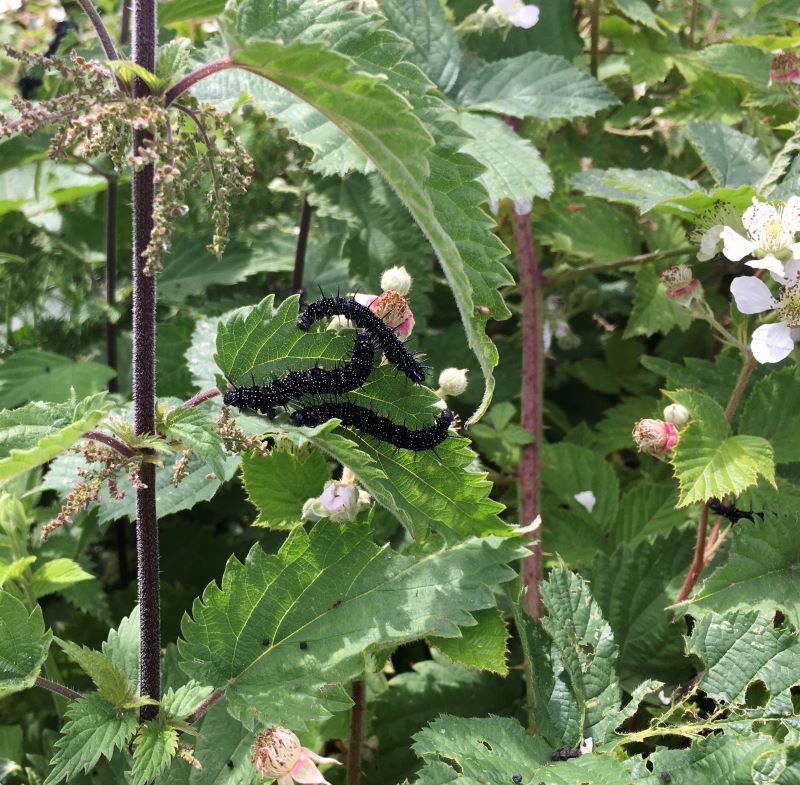
Once harvested and put in a bag as described, quite a lot of the seeds will drop to the bottom of the bag as the plants are dry. Strip off the strands of seeds and rubbing them through a sieve to collect other seeds that are still on the plants. You’ll probably find you still have a fair amount of seed husk on many of the tiny seeds, but this is fine.
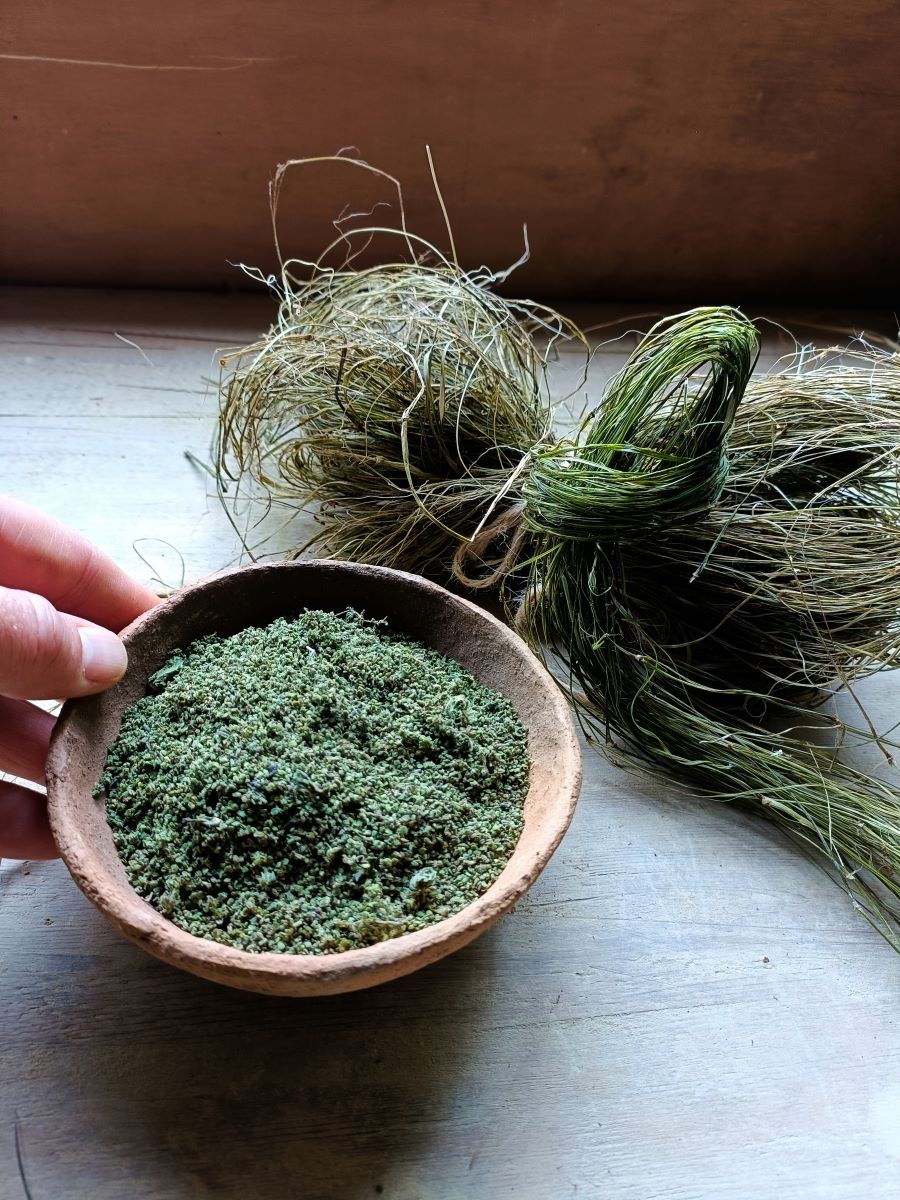
Store in a jar, and sprinkle them on your food: they’re tasty added to soups, salads, etc, or you can add them to the mix when you’re making crackers. They have a slightly rough texture from the small amount of husk on them but they won’t sting you. In hay fever season I chew a teaspoonful of seeds every morning to help alleviate symptoms.
Some people find them very stimulating. Go easy to begin with in terms of how much you consume, starting with half a teaspoon per day and see how you go.
As herbalist friend Lucinda Warner notes, nettle seeds are adaptogens. This means they help with the general stress response, strengthen the adrenals, and are also loaded with minerals and trace elements. This makes them a helpful ally for chronic exhaustion, adrenal fatigue and burnout. The benefits of nettle seeds have some overlap with those of the leaf: both are strengthening, mineral rich, great for skin and hair and for supporting the kidneys and urinary system. Whereas the leaf is gentler and more nourishing however, the seed packs more of a punch.
In the photo you can see a bundle of fibres next to the bowl of nettle seeds. I extracted these earlier in the season, before flowers appeared. They will store dry like this until I’m ready to make them into cordage.
Nettles are one of the plants we extract fibres from on the Wild Cordage woodland workshop, and the plant we use for making Netted Bags; it makes gorgeous string.
